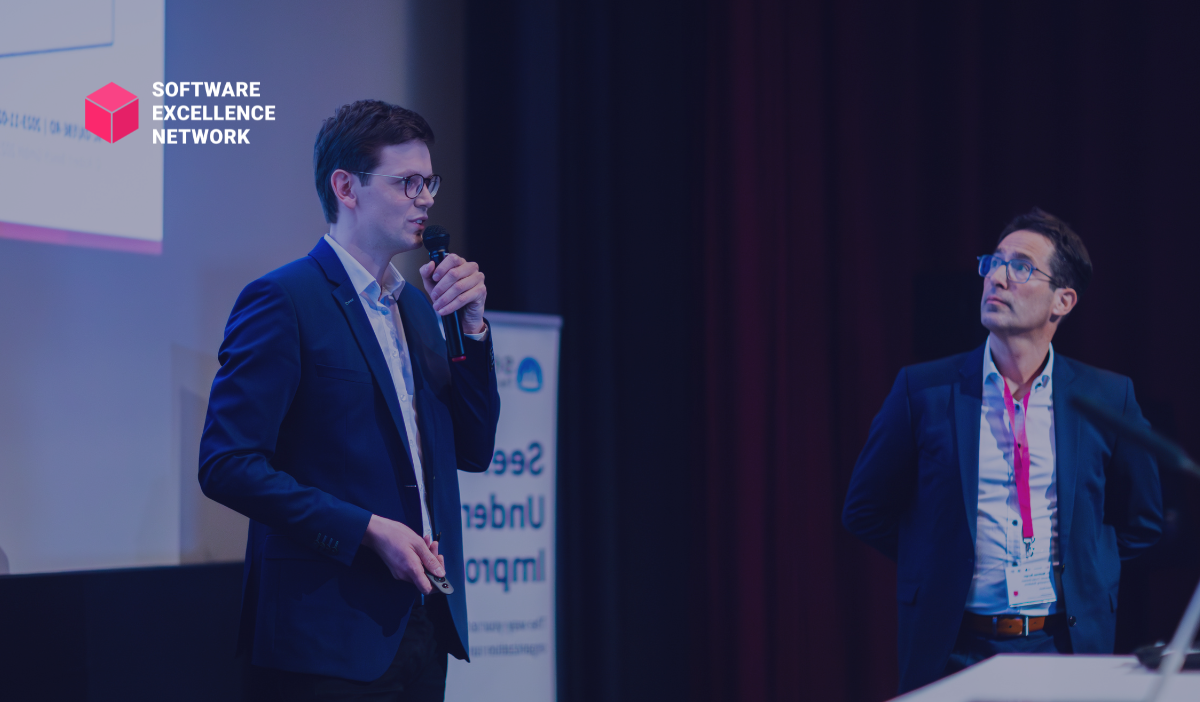
Creating Flow in Software Engineering: Lessons from Bosch
At the Sharing the Roadmap executive exchange, Dr. Matthias Burger and Felix Meyer zu Driehausen of Bosch unveiled their strategic approach to overcoming complexity in automotive software development. Their presentation focused on achieving seamless integration and productivity in the context of Bosch’s Cross-Domain Computing Solutions business unit. This unit encompasses assisted and automated driving, software and services, E/E architectures, and cockpit solutions. Central to their vision is the concept of “creating flow” in software engineering, which draws lessons from manufacturing and applies them to software development at scale.

The transition to software-defined vehicles is reshaping the automotive industry. Customers now expect seamless updates and continual enhancements over a vehicle's lifecycle. This demand adds immense complexity, especially in Bosch’s areas of focus, such as assisted and automated driving, e-architectures, and cockpit solutions.
Dr. Burger highlighted the intricate stack involved in these systems, which includes sensors, compute hardware, operating systems, middleware, and application software. This complexity is compounded by the need to cater to highly specific customer requirements. According to Dr. Burger, variation is an inherent part of Bosch’s business model, making it essential to find effective ways to manage it.
The shift toward continuous updates further complicates matters. Software is no longer a one-time deliverable but an evolving product that requires maintenance and updates over 10 to 15 years. As Dr. Burger emphasized, “the days of delivering a customer-specific solution and forgetting about it are gone.” Speed, decoupling software from hardware, and ensuring updates are implemented efficiently have become critical.

To address these challenges, Bosch relies on configurable software platforms. Reusable application software components are integrated into shared platforms, such as driving and parking solutions, and then tailored to specific customer requirements. This approach minimizes duplication and maximizes efficiency.
However, maintaining this delivery chain requires vigilance. Dr. Burger warned that disruptions, such as delayed updates or patchwork fixes, can lead to fragmentation and inefficiencies. These issues risk breaking the delivery chain, creating unsustainable costs and slowing innovation.
To manage complexity and maintain efficiency, Bosch has adopted lean manufacturing principles in its software processes. The goal is to create “flow”—a seamless, efficient pipeline from development to deployment—using metrics and real-time visibility to identify and address bottlenecks.
Meyer zu Driehausen outlined two critical metrics used at Bosch:
DORA Metrics: These include lead time, deployment frequency, mean time to repair, and change failure rate. By tracking these metrics, Bosch can evaluate how quickly and effectively software moves through the pipeline.
Integration Lag: This metric measures the delay between updates to reusable software components and their integration into customer-specific solutions. By identifying delays, Bosch can prevent misalignments and ensure the delivery chain remains intact.
To support these efforts, Bosch developed the Bosch Monitoring and Analytics Service, which aggregates data from diverse tools like GitHub, Bitbucket, and various package managers. This system provides the transparency needed to track metrics and steer the delivery chain effectively.
One example of the importance of metrics is managing middleware updates. Meyer zu Driehausen explained how discrepancies in update speeds for driving and parking applications created misalignments. When parking applications updated the middleware ahead of driving applications, it introduced dependencies that risked stalling the entire delivery chain.
Through metrics like integration lag, Bosch identified the issue and took steps to align updates, avoiding potential disruptions. This case underscores the importance of transparency and proactive management in software engineering.
Dr. Burger and Meyer zu Driehausen concluded with actionable insights for the automotive industry:
As the automotive industry embraces software-defined vehicles, managing complexity while delivering value will be key. Bosch’s focus on creating flow, leveraging metrics, and fostering systemic productivity offers a roadmap for success. By integrating lean principles into software development, Bosch is setting the stage for sustainable innovation in a rapidly evolving market.
The Software Excellence Network is a community of top IT leaders, researchers, and innovators dedicated to tackling the challenges of corporate software development. By facilitating open dialogue, masterclasses, and executive exchanges, the network fosters collaboration and knowledge sharing to advance excellence in software strategies and solutions. We're proud to call the Hasso Plattner Institute, Microsoft, Roland Berger, EY, and MaibornWolff our partners in this mission.
This article provides a journalistic summary of the ideas shared by Dr. Matthias Burger and Felix Meyer zu Driehausen during their presentation. While we’ve highlighted the key concepts and innovations they discussed, the full depth of their insights and examples can only be appreciated by watching the complete session. If you’re intrigued by these ideas and want to hear them explained directly by the speakers, we encourage you to watch the full video of their presentation. If you have any questions or concerns, please contact us.
These Stories on Events/Webinars
August-Bebel-Str. 26-53
14482 Potsdam, Germany
hello@seerene.com
+49 (0) 331 706 234 0
Generative AI Seerene GmbH
August-Bebel-Str. 26-53
14482 Potsdam, Germany
hello@seerene.com
+49 331 7062340